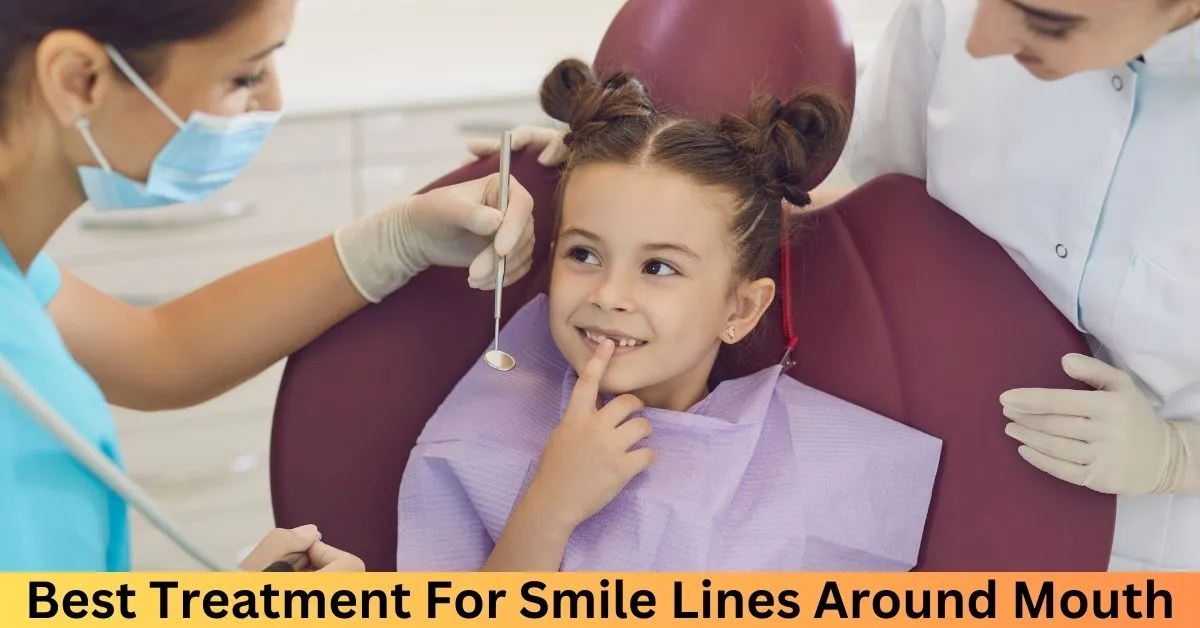Smile line fillers, also known as nasolabial fold fillers, are a popular non-surgical cosmetic procedure used to reduce the appearance of wrinkles and lines around the mouth. The lines, which run from the corners of the nose to the corners of the mouth, become more noticeable with age due to a loss of collagen and volume in the face.
What to expect before and after smile line filler treatment:
- Before: During a consultation with a qualified healthcare professional, you will discuss your goals for the treatment and your medical history. The provider will also assess your skin and facial anatomy to determine if you are a good candidate for fillers.
- After: The filler is injected into the targeted areas using a thin needle. The procedure is usually quick and well-tolerated, with minimal discomfort. You may experience some swelling, bruising, or redness after the injection, but these side effects typically resolve within a few days.
Results:
Smile line filler treatment can provide immediate results, with the full effects being visible within a week or two. The results can last for up to 18 months, depending on the type of filler used and your body chemistry.
Important things to consider:
- Smile line filler treatment is not a permanent solution and will need to be repeated over time to maintain the results.
- It is important to choose a qualified healthcare professional with experience in injecting fillers.
- There are some risks associated with smile line filler treatment, such as infection, allergic reaction, and bruising. Be sure to discuss these risks with your provider before undergoing the procedure.
Contents
- 1 How long do smile line fillers last?
- 2 Can filler get rid of smile lines?
- 3 Can smile line filler go wrong?
- 4 What are the side effects of smile line fillers?
- 5 Can you kiss after a smile line filler?
- 6 Which filler is best for smile lines?
- 7 How can I fill my smile lines naturally?
- 8 How do you fix smile lines without fillers?
How long do smile line fillers last?
The duration of smile line filler results can vary depending on several factors, including:
Type of filler used: Different fillers have different lifespans. Generally, hyaluronic acid (HA) fillers like Juvéderm and Restylane last 6-18 months, while calcium hydroxyapatite fillers like Radiesse can last 12-18 months. Even longer-lasting options like Bellafill can last up to 5 years.
Individual factors: Your body’s metabolism plays a big role in how quickly the filler is absorbed. People with faster metabolisms may see results fade sooner. Additionally, factors like age, smoking, and sun exposure can also influence longevity.
Injection technique: The skill and technique of the injector can impact how long the filler lasts. Experienced injectors can place the filler strategically for optimal results and longevity.
Amount of filler used: More filler typically translates to longer-lasting results, but it’s important to find the right balance for your desired outcome and natural appearance.
Touch-up appointments: Regular touch-up appointments can help maintain your desired results. These typically occur every 6-12 months, depending on the individual and filler type.
Here’s a general guideline for smile line filler longevity:
- Hyaluronic acid fillers: 6-18 months
- Calcium hydroxyapatite fillers: 12-18 months
- Poly-L-lactic acid (PLLA) fillers: 2-5 years
- Polymethylmethacrylate (PMMA) fillers: Up to 5 years
Remember: These are just estimates, and individual results may vary. It’s always best to consult with a board-certified dermatologist or plastic surgeon to discuss your specific case and get a personalized estimate for how long smile line fillers might last for you.
Can filler get rid of smile lines?
Dermal fillers can be very effective in reducing the appearance of smile lines, but it’s not a guarantee of complete “getting rid” of them. Here’s a breakdown of their potential:
Effectiveness:
- Fillers work by plumping up the skin, filling in the creases formed by smile lines. They can significantly soften the lines, making them less noticeable and creating a smoother appearance.
- However, the complete elimination of smile lines might not be achievable, especially for deeper lines. Fillers can’t address the underlying muscle movement that causes the lines to form.
Factors influencing results:
- Severity of smile lines: Deeper lines may require more filler or a combination of treatments for optimal results.
- Type of filler: Different fillers have varying properties and longevity. Hyaluronic acid fillers are popular for smile lines due to their natural feel and temporary nature, allowing for adjustments if needed.
- Injection technique: A skilled injector can strategically place the filler to achieve the desired outcome and maximize its impact.
- Individual factors: Age, skin elasticity, and lifestyle habits like smoking can affect how well the filler holds and how long it lasts.
Additional considerations:
- Temporary solution: Fillers are not permanent and require touch-up appointments every 6-18 months to maintain results.
- Cost: The cost of filler treatments can vary depending on the type of filler, amount used, and provider expertise.
- Potential side effects: Minor side effects like bruising, swelling, and redness are possible, though usually temporary.
Alternatives:
- Botox can help relax the muscles contributing to smile lines, but it won’t directly fill them in.
- Laser treatments or microneedling can stimulate collagen production and improve skin texture, potentially reducing the appearance of lines.
The best way to determine if filler is right for you and how effective it will be in addressing your smile lines is to consult with a board-certified dermatologist or plastic surgeon. They can assess your individual needs and recommend the most suitable treatment options.
Can smile line filler go wrong?
Yes, smile line filler, like any medical procedure, carries some potential risks and complications. While most side effects are minor and temporary, understanding these possibilities is crucial before making a decision. Here’s an overview of potential issues:
Common side effects:
- Bruising: Temporary bruising at the injection site is frequent and typically resolves within a week.
- Swelling: Mild swelling is common and usually subsides within a few days.
- Redness: Temporary redness or irritation around the injection site can occur.
- Tenderness: The treated area may feel tender or firm for a short period.
Less common side effects:
- Lumpiness: Uneven distribution of filler can create bumps or nodules under the skin. This might require dissolving the filler or additional injections for correction.
- Infection: Though rare, bacterial infections can occur if proper sterilization procedures aren’t followed.
- Allergic reaction: While uncommon, allergic reactions to the filler material can happen.
Serious, but rare, complications:
- Vascular occlusion: Accidental injection into a blood vessel can block blood flow, leading to tissue death or even stroke in rare cases. This is why choosing a qualified and experienced injector is crucial.
- Blindness: In extremely rare cases, filler injected near the eyes can migrate and block blood vessels, potentially leading to vision problems.
Additional factors to consider:
- Improper technique: An inexperienced injector can increase the risk of complications. Choose a board-certified dermatologist or plastic surgeon with expertise in facial fillers.
- Quality of filler: Using reputable brands and ensuring proper storage reduces the risk of adverse reactions.
- Unrealistic expectations: Fillers can significantly improve smile lines, but complete elimination might not be achievable. Discuss realistic goals with your provider.
Remember: While complications are possible, they are relatively uncommon when considering the millions of successful smile line filler procedures performed each year. Consulting a qualified healthcare professional and carefully discussing your concerns before deciding on this treatment can significantly minimize the risks and help you achieve a safe and satisfying outcome.
What are the side effects of smile line fillers?
While smile line fillers are generally considered safe, like any medical procedure, they do come with potential side effects. It’s important to be aware of these before making a treatment decision. Here’s a breakdown of the most common and rare side effects:
Common side effects (usually resolve within a few days):
- Swelling: This is the most common side effect and typically subsides within 24-48 hours. Ice packs can help reduce swelling.
- Bruising: Similar to swelling, bruising is common and usually fades within a week. Arnica cream may help speed up the healing process.
- Redness: The injection site may be red for a few days.
- Tenderness: The area may feel tender or sore for a short period.
- Itching: Mild itching around the injection site is possible.
Less common side effects:
- Lumpiness: Small bumps may form under the skin, but these often smooth out within a few weeks. If they persist, see your doctor.
- Infection: This is rare but can occur if proper sterile technique is not used.
- Allergic reaction: If you are allergic to any of the filler ingredients, you may experience an allergic reaction.
Rare side effects:
- Vascular occlusion: This is a serious but very rare complication where the filler blocks a blood vessel, potentially leading to tissue death.
- Granuloma: This is a small, inflammatory nodule that forms around the filler.
- Blindness: This is an extremely rare complication that can occur if filler is accidentally injected into an artery near the eye.
Important considerations:
- Individual risk factors, such as allergies or certain medical conditions, can increase the chance of side effects. Always disclose your full medical history to your doctor before treatment.
- Choosing a qualified and experienced healthcare professional who uses FDA-approved fillers can significantly reduce the risk of complications.
- Never get fillers from an unlicensed or untrained provider.
- Be aware that results are not permanent, and touch-up appointments are needed to maintain the desired effect.
Remember: This information is intended for general knowledge only and should not be taken as medical advice. Always consult a qualified healthcare professional for personalized recommendations and to discuss any concerns you may have about smile line fillers and their potential side effects.
Can you kiss after a smile line filler?
Kissing after smile line filler is generally possible but with some precautions and a timeframe to consider.
Here’s the breakdown:
Immediate aftermath (24-48 hours):
- Avoid kissing: Your lips and the treated area will likely be swollen and tender, making kissing uncomfortable and potentially impacting the filler’s settling. Additionally, the open wounds from the injection sites could increase the risk of infection with close contact.
After 24-48 hours:
- Gentle kissing might be okay: If the swelling and tenderness subside, gentle, non-aggressive kissing is generally considered safe. However, consult your doctor for specific guidance based on your individual case and recovery speed.
Cautions and considerations:
- Avoid vigorous kissing: Even after initial healing, avoid intense or rough kissing for at least a week, as it can displace the filler or irritate the treated area.
- Listen to your body: If you experience any discomfort, pain, or swelling after kissing, stop immediately and consult your doctor.
- Hygiene is key: Maintain good oral hygiene to minimize the risk of infection, especially in the first few days after treatment.
- Seek professional advice: Always follow your doctor’s specific instructions and consult them with any concerns about kissing or post-treatment activities.
Remember, prioritizing your healing and ensuring the filler settles properly is crucial for optimal results and minimizing complications. So, while kissing isn’t entirely off the table, patience and prioritizing proper recovery are key!
Which filler is best for smile lines?
There’s no single “best” filler for smile lines as the ideal choice depends on several factors specific to you and your desired outcome. Here’s a breakdown to help you navigate the options:
Types of Fillers:
- Hyaluronic Acid (HA) Fillers: These are the most popular for smile lines due to their natural feel, temporary nature (allowing for adjustments), and ability to attract water, plumping the skin. Examples include Juvederm, Restylane, and Belotero.
- Calcium Hydroxyapatite (CaHA) Fillers: These offer longer-lasting results than HA fillers (up to 18 months) and stimulate collagen production. Examples include Radiesse and Sculptra.
- Poly-L-Lactic Acid (PLLA) Fillers: These stimulate collagen production for long-lasting results (up to 5 years) but require multiple treatments for optimal effect. Example: Sculptra Aesthetic.
- Polymethylmethacrylate (PMMA) Fillers: These offer the longest-lasting results (up to 5 years) but are not reversible and require expert injection due to their permanent nature. Example: Bellafill.
Factors influencing the best choice:
- Severity of smile lines: Deeper lines may require fillers with more structure and volume, like CaHA or PLLA.
- Desired longevity: If you prefer temporary results for adjustments, HA fillers are suitable. For longer-lasting options, consider CaHA, PLLA, or PMMA (with caution).
- Budget: Fillers vary in cost, with HA being generally less expensive than longer-lasting options.
- Individual preferences and concerns: Discuss your desired outcome and any concerns with your provider to determine the best fit for you.
Additional considerations:
- Experienced injector: Regardless of the filler type, choosing a qualified and experienced injector is crucial for optimal results and minimizing risks.
- Consultation: A thorough consultation with a board-certified dermatologist or plastic surgeon experienced in facial fillers is essential to assess your individual needs and recommend the most suitable option.
Remember, there’s no one-size-fits-all solution. Consulting a qualified healthcare professional and considering the factors mentioned above will help you make an informed decision and choose the best filler for your specific needs and smile line concerns.
How can I fill my smile lines naturally?
While natural methods can’t eliminate smile lines, they can help reduce their appearance and promote healthier, younger-looking skin. Here are some natural approaches you can explore:
Lifestyle and Habits:
- Hydration: Drink plenty of water throughout the day to keep your skin plump and hydrated from within. Aim for 8-10 glasses daily.
- Healthy diet: Consume a balanced diet rich in fruits, vegetables, and whole grains, which provide essential nutrients for skin health. Include antioxidants like vitamins C and E to combat free radical damage.
- Sun protection: Always wear sunscreen with SPF 30 or higher to protect your skin from harmful UV rays that accelerate aging and wrinkle formation.
- Sleep: Aim for 7-8 hours of quality sleep each night to allow your skin to repair and regenerate.
- Reduce stress: Chronic stress can worsen various skin concerns, including wrinkles. Practice stress management techniques like yoga, meditation, or deep breathing exercises.
- Quit smoking: Smoking damages skin elasticity and accelerates wrinkle formation. Quitting smoking can significantly improve your skin’s overall health and appearance.
Facial Exercises:
- Facial yoga: Regularly performing specific facial exercises can help strengthen and tone the muscles around your mouth, potentially reducing the appearance of smile lines.
- Facial massage: Gently massage your face using upward motions to stimulate circulation and promote lymphatic drainage, which may help reduce puffiness and tighten the skin.
Natural Skincare Products:
- Moisturizers: Use a moisturizer formulated for your skin type, applying it twice daily to keep your skin hydrated and supple. Look for ingredients like hyaluronic acid, ceramides, and squalane.
- Retinol: This over-the-counter retinoid helps stimulate collagen production and improve skin texture, potentially reducing the appearance of fine lines and wrinkles. Start gradually and use SPF diligently as retinol increases sun sensitivity.
- Vitamin C serums: These serums contain antioxidants that fight free radical damage and brighten the skin, potentially improving the appearance of wrinkles and discoloration.
- Facial oils: Natural oils like jojoba, rosehip, and argan oil can nourish and moisturize your skin. Choose non-comedogenic oils that won’t clog pores.
Remember: Consistency is key with natural approaches. It may take several weeks or months to see noticeable results. Additionally, these methods may not be as effective for deep wrinkles as injectables or other cosmetic procedures. Always consult a dermatologist before starting any new skincare routine, especially if you have sensitive skin or any underlying conditions.
By incorporating these natural methods into your daily routine, you can promote healthy skin and potentially reduce the appearance of smile lines, achieving a more youthful and radiant appearance.
How do you fix smile lines without fillers?
There are several ways to address smile lines without resorting to fillers, although results might not be as immediate or dramatic as with fillers. Here are some options to consider:
Lifestyle and habits:
- Hydration: Drinking plenty of water throughout the day is crucial for plump, hydrated skin. Aim for 8-10 glasses daily.
- Healthy diet: Consume fruits, vegetables, and whole grains for essential nutrients that benefit skin health. Include antioxidants like Vitamin C and E to combat free radical damage.
- Sun protection: Always wear SPF 30+ sunscreen to shield your skin from harmful UV rays that accelerate aging and wrinkle formation.
- Sleep: Aim for 7-8 hours of quality sleep each night to allow your skin to repair and regenerate.
- Stress management: Chronic stress can worsen various skin concerns, including wrinkles. Practice stress management techniques like yoga, meditation, or deep breathing exercises.
- Quit smoking: Smoking damages skin elasticity and accelerates wrinkle formation. Quitting can significantly improve your skin’s health and appearance.
Facial exercises:
- Facial yoga: Regularly performing specific facial exercises can help strengthen and tone the muscles around your mouth, potentially reducing the appearance of smile lines.
- Facial massage: Gently massage your face using upward motions to stimulate circulation and promote lymphatic drainage, which may help reduce puffiness and tighten the skin.
Topical skincare:
- Moisturizers: Use a moisturizer formulated for your skin type to keep it hydrated and supple. Look for ingredients like hyaluronic acid, ceramides, and squalane.
- Retinol: This over-the-counter retinoid helps stimulate collagen production and improve skin texture, potentially reducing the appearance of fine lines and wrinkles. Start gradually and use SPF diligently as retinol increases sun sensitivity.
- Vitamin C serums: These serums contain antioxidants that fight free radical damage and brighten the skin, potentially improving the appearance of wrinkles and discoloration.
- Facial oils: Natural oils like jojoba, rosehip, and argan oil can nourish and moisturize your skin. Choose non-comedogenic oils that won’t clog pores.
Professional treatments:
- Microneedling: This minimally invasive procedure creates tiny punctures in the skin, stimulating collagen and elastin production and potentially improving skin texture and reducing wrinkles.
- Laser treatments: Resurfacing lasers can remove damaged outer layers of skin, revealing smoother, younger-looking skin and potentially reducing wrinkles.
- Chemical peels: These peels exfoliate the skin, promoting cell turnover and improving skin texture and tone, potentially reducing the appearance of wrinkles.
Additional tips:
- Maintain a consistent skincare routine for optimal results.
- Be patient; results from non-invasive methods may take longer to appear than fillers.
- Consult a dermatologist for personalized advice on the best approach for your specific needs and skin type.
Remember, while fillers offer quick and noticeable results, they are temporary and require upkeep. By focusing on healthy lifestyle habits, consistent skincare, and potentially exploring professional treatments, you can improve the appearance of smile lines and promote overall skin health without resorting to injections.







